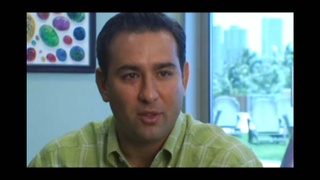Interviews
Facing housing discrimination in Rhode Island
So they gave me a list of people who would take on students for housing. So, I went knocking on all these doors they had on the list. This was in late August, before school started. As soon as I got there and tried to see if they had room...after about 5 or 6 of them, I began to realize, they all, for one reason or another, didn’t have any room. It was strange. So, I told my mother and father, “Something’s wrong here. I’m not going to go to this school.” So, I got on a Greyhound bus and came home. And I told ‘em, “I’m going to UCLA” because I was already accepted to UCLA. I had no idea what to do. So, basically, even in Rhode Island, I recall, even in New Jersey, when you went to a movie, African-Americans, or Black, were upstairs in the balcony and only whites were downstairs. Somehow, in New Jersey, I was treated as a white. So, anyway, it was a very strange kind of thing going on there. I told the Rhode Island School of Design “I’m not going there.”
Date: September 15, 2017
Location: California, US
Interviewer: Jennifer Cool
Contributed by: Jennifer Cool, Matthew Purifoy
Explore More Videos

Traumatic experiences before camp
(1913-2013) Doctor specializing in obstetrics in Southern California

“Everybody went in like sheep”
(1913-2013) Doctor specializing in obstetrics in Southern California


Working tirelessly after the war (Japanese)
(1928 - 2008) Drafted into both the Japanese Imperial Army and the U.S. Army.


Discrimination for Nisei doctors
(1928–2016) Daughter of an Issei doctor


On Joining the Marine Corps
(b. 1934) The First Japanese American Appointed to the U.S. Court of Appeals.

Being Denied as a Japanese American Lawyer
(b. 1934) The First Japanese American Appointed to the U.S. Court of Appeals.


Feeling prejudice while looking for jobs
(1919 - 2015) Nisei who served in World War II with the 442nd Regimental Combat Team

Invited to teach at Harvard by his boss
(1919 - 2015) Nisei who served in World War II with the 442nd Regimental Combat Team

Discrimination faced in San Francisco (Japanese)
(b. 1937) A war bride from Yokohama

Accepted by Japanese society as I learned more Japanese (Japanese)
(b. 1979) Sansei Nikkei Brazilian who lives in Oizumi-machi in Gunma prefecture. He runs his own design studio.

